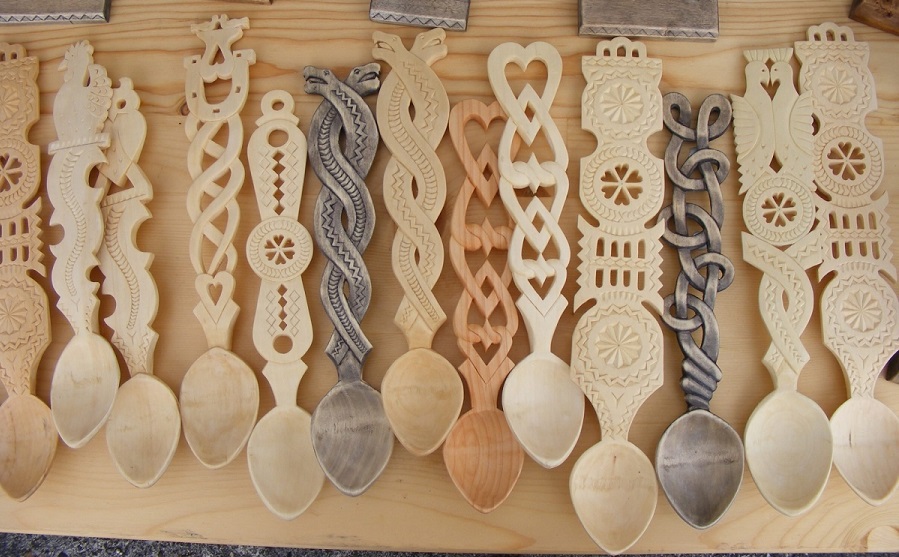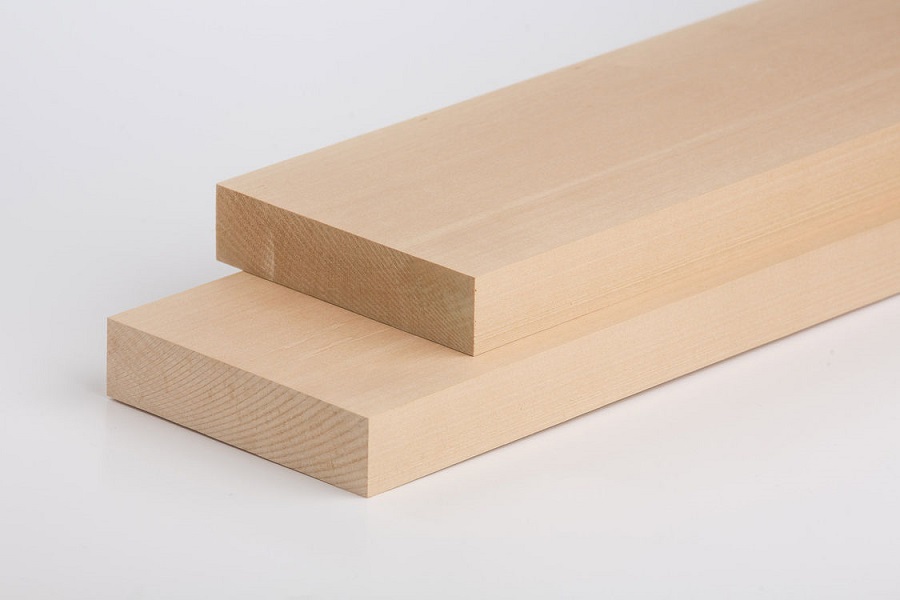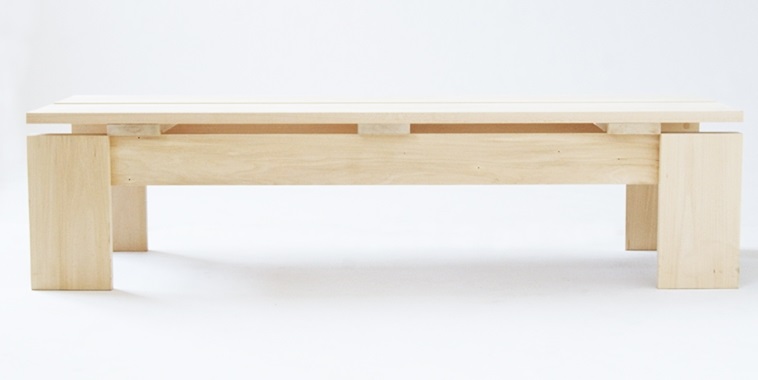Lime wood is not a spectacular wood like ulm or acaciabut it is unfair to ignore it. It is like neglecting the good and quiet child and paying more attention to the intelligent but naughty one. Because lime is a problem-free wood that dries without disturbing warping, does not crack and is very easy to work. Although it has the strength oak, is prized primarily for the ease with which it can be carved. Let's see what surprises are in store for lime and lime wood.

Old lime tree
Lime is one of the oldest trees on the planet. It is thought to have been around since the Cretaceous, with fossilized lime wood found in several places in the northern hemisphere. It is a long-lived tree that can live for more than 1000 years. For example, in the garden Imperial Castle in Nuremberg is a lime tree said to have been planted over 1000 years ago by the wife of King Heinrich II of Germany (Rex Romanorum). Slovenia also has a famous lime tree - Najevska lipa - which is over 700 years old and used as a meeting place for various events.
The most famous lime tree in Romania is Eminescu's Linden located in the Copou Garden in Iasi. It is a symbol of the city and over 500 years old. Another famous lime tree is in Barnova, thought to be almost 700 years old, or in Maramureș. This is the home of George Pop de Băsești's Teiul Unirii, thought to be over 300 years old. Legend has it that it was in the shade of this linden that those who plotted the Great Union met.
Linden is considered a holy wood by village people because "where there is a linden tree, there is never a thunderbolt". This is why it is used to build churches or objects used in the church. At Whitsun, holy linden twigs are placed at the gate to protect the household from evil.
Lime tree
There are over 30 types of lime trees worldwide, differing in leaf shape, flower shape and size. In addition, there are several hybrid species resulting from crosses between the former. The most widespread in Europe is Tilia europaea, a hybrid between Tilia cordata and Tilia platyphyllos. If you are curious to search for information in English about lime, you should look for lime tree or linden tree. Different types of lime trees occur in North America, the Middle East, China or Japan, with the northern hemisphere being the main area of development. The tree grows to a height of 20-40 m and a diameter of 1.5-2 m. It has a rich crown and is prized for retaining a lot of atmospheric dust (third after oak and elm). The flowers - small inflorescences at the end of a slender stalk - are yellow and have an unmistakable scent that envelops cities towards the end of May.
Linden is highly prized for its healing powers. The flowers are best known as a remedy for coughs, colds, nervous or anxious conditions. But the wood or bark is also used in both human and veterinary pharmacy.
Characteristics of lime wood
Even though there are so many different species of lime, the difference in their wood is insubstantial. The color is yellowish-white to cream, with slightly reddish or greenish tinges. It darkens with age to dark yellow or light brown. The sapwood is indistinguishable from the heartwood, and the annual rings are barely visible. The fiber is straight, uniform, homogeneous and fine.
The density of lime wood is 560 kg/m³ when dry. It is a light wood although it has very good strength. It dries fairly quickly, does not crack, and there is very little warping during drying. However, it has medium to low durability and is easily attacked by fungi or insects. It is therefore not recommended for outdoor use.
Lime wood is easily processed, both by machine and by hand. When working by hand, very sharp tools must be used as it has a tendency to warp. It is easily glued with glue and can be troweled, sieved, oiled or lacquered without problems. I mentioned that the lime tree is a lot like poplarThe difference is the slightly reddish color and slightly denser fiber. This makes linden more evenly colored than poplar, which stains easily.

Uses of lime wood
Because it's light and soft, lime wood is very easy to work with and is probably the most commonly used wood for hand carving. It is highly appreciated by beginners because it does not resist and does not crack. It is used as lumber, aesthetic or technical veneer, tackle.
Lime wood is made frames for paintings or mirrors. It is a very good raw material for decorative objects such as spoons or small sculptures. It is easily turned into bowls or other types of vessels. As it is lightweight, it can be used to make electric guitars and other musical instruments.
Furniture is also made from lime wood. There was a time when, along with poplar, it was intensively used for furniture called poor art. It was preferred to poplar because of its ease of processing, but at the time it was much more expensive. Since then, the price difference is no longer so great and poplar has also increased in value. I discovered the difference between the two species by finishing them. In general appearance they were not very different, with the slightly reddish color of the lime making the difference. But when it came to the finish, the difference was like heaven on earth. While poplar is very difficult to color, almost always coming out blotchy and needing subsequent evening out, lime colors beautifully, evenly, rarely needing touch-ups.
Because it is lightweight, despite its low outdoor resistance, it is used to make shutters. It is recommended, however, to be installed in places protected by awnings or where the window is set back inwards. And to the delight of children (and not only children), it is used to make puppets - the main actors in puppet theaters.
Article completes the collection Wood specieswhich you can access at any time on the website. If it might be of interest to others, you can share it. And if you have any questions, clarifications or additions, leave them below, in the dedicated space. As you are already used to, I will reply. 🙂


































Greetings!
I need some advice...
I want to make a covered terrace and a riffle-like fence out of lime wood. Posts, beams, board support (don't know the technical name).
Is this wood suitable for such a purpose? If not, what would be the disadvantages compared to fir wood?
Thank you!
Good evening!
Lime wood is not strong on the outside, it is similar to poplar. Fir is a much better choice.
Lime trees absorb more moisture and rot faster. It's also a fairly soft wood, more suitable for carving than for this kind of work, which also involves some strength.
Below is a link to an article on the strength of wood outdoors.
All the best!
https://revistadinlemn.ro/2019/06/12/cele-mai-rezistente-specii-de-lemn-la-exterior/
Can linden trees be used for indoor steps?
It is not recommended because it is a softer wood. Scratches and indentations occur more quickly than in other species.
Much more suitable is beech, ash, oak or softwood.
Is "solid lime wood" correct?
Yes, that is correct.
Wood can be in various forms: timber, veneer, chippings (for chipboard, for example), sawdust, flour or dust. The term 'solid wood' refers to the use of wood in the form of lumber, timbers or beams. In practice, 'solid lime wood' means lime lumber, not its density or weight.
Hello!
I'd like to buy a solid basswood chest of drawers for using books, clothes and other household items indoors, somewhere where the temperature sometimes stays low, because we don't always use the place.
Is lime recommended for this?
Good evening!
If the area is not wet, there is no problem.
Being comfortable, I think it is already protected with varnish or oil.
If it isn't, my recommendation is to give it a coat of oil or wax. It would be more protected from dirt and excessive moisture absorption.
I have carved in linden wood and when I applied the varnish, it made marks dt fiber, some brown streaks.What do you advise me to do to stop those streaks?
There are several reasons for streaks: the wood has not been properly sanded, the varnish has been too thick, the brush is not of good quality and does not apply evenly.
My recommendation is to sand the wood well before applying varnish. Lime wood is softer and needs a finer sanding. Use 150 or 180 grit sandpaper. After sanding, dust thoroughly with a soft, clean cotton cloth (an old T-shirt).
Use colorless varnish. With colored varnish, if the transitions overlap, a dark stripe appears on the overlap area. If you want to stain, it is better to stain the wood before and after drying, apply colorless varnish.
Thin the varnish before application. It looks much better if you apply 2-3 thin coats rather than one thick one.
Instead of a paintbrush, use a small paint brush. You can find them in paint and varnish shops. It is much more evenly applied. Note that there is a special brush for thinner-based varnishes. The ones for water-based varnishes do not hold, as the sponge will become too wide when in contact with the thinner.
Good luck!